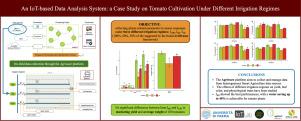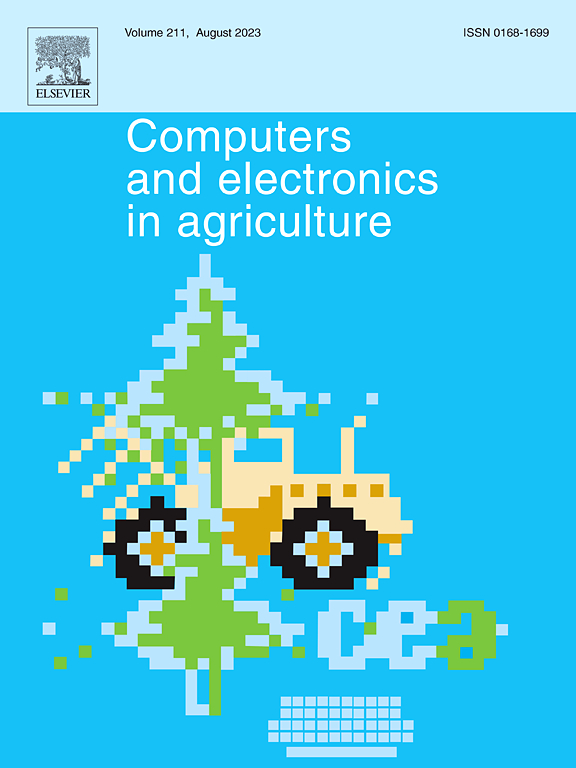An IoT-based data analysis system: A case study on tomato cultivation under different irrigation regimes
IF 8.9
1区 农林科学
Q1 AGRICULTURE, MULTIDISCIPLINARY
引用次数: 0
Abstract
The exploitation of modern technologies in heterogeneous farming scenarios with different crops cultivation is nowadays an effective solution to implement the concept of Smart Agriculture (SA). Following this approach, in this study the tomato plants’ response to different irrigation regimes is investigated through the implementation of an Internet of Things (IoT)-oriented SA data collection and monitoring system. In particular, the experimentation is conducted on tomatoes grown at three different irrigation regimes: namely, at 100%, 60%, and 30% of the Italian irrigation recommendation service, denoted as Irriframe. The proposed platform, denoted as Agriware, is able to: (i) evaluate information from heterogeneous data sources, (ii) calculate agronomic indicators (e.g., Growing Degree Days, GDD), and (iii) monitor on-field parameters (e.g., water consumption). Different plant-related parameters have been collected to assess the response to water stress (e.g., Soil Plant Analysis Development (SPAD), chlorophyll content, fluorescence, and others), along with leaf color and final production evaluations. The obtained results show that the best irrigation regime, in terms of plant health and productivity, corresponds to 60% of Irriframe, allowing significant water savings for the cultivation.

基于物联网的数据分析系统——以不同灌溉制度下番茄种植为例
在不同作物种植的异构农业场景中利用现代技术是当今实现智能农业概念的有效解决方案。按照这种方法,本研究通过实施面向物联网(IoT)的SA数据收集和监测系统,研究了番茄植株对不同灌溉制度的响应。特别是,实验是在三种不同的灌溉制度下进行的:即100%,60%和30%的意大利灌溉推荐服务,表示为Irriframe。该平台被称为Agriware,能够:(i)评估来自异构数据源的信息,(ii)计算农艺指标(例如,生长度天数,GDD),以及(iii)监测现场参数(例如,用水量)。收集了不同的植物相关参数来评估对水分胁迫的响应(例如,土壤植物分析发展(SPAD),叶绿素含量,荧光等),以及叶片颜色和最终产量评估。所获得的结果表明,就植物健康和生产力而言,最佳灌溉制度相当于Irriframe的60%,从而大大节省了种植用水。
本文章由计算机程序翻译,如有差异,请以英文原文为准。
求助全文
约1分钟内获得全文
求助全文
来源期刊

Computers and Electronics in Agriculture
工程技术-计算机:跨学科应用
CiteScore
15.30
自引率
14.50%
发文量
800
审稿时长
62 days
期刊介绍:
Computers and Electronics in Agriculture provides international coverage of advancements in computer hardware, software, electronic instrumentation, and control systems applied to agricultural challenges. Encompassing agronomy, horticulture, forestry, aquaculture, and animal farming, the journal publishes original papers, reviews, and applications notes. It explores the use of computers and electronics in plant or animal agricultural production, covering topics like agricultural soils, water, pests, controlled environments, and waste. The scope extends to on-farm post-harvest operations and relevant technologies, including artificial intelligence, sensors, machine vision, robotics, networking, and simulation modeling. Its companion journal, Smart Agricultural Technology, continues the focus on smart applications in production agriculture.
 求助内容:
求助内容: 应助结果提醒方式:
应助结果提醒方式:


